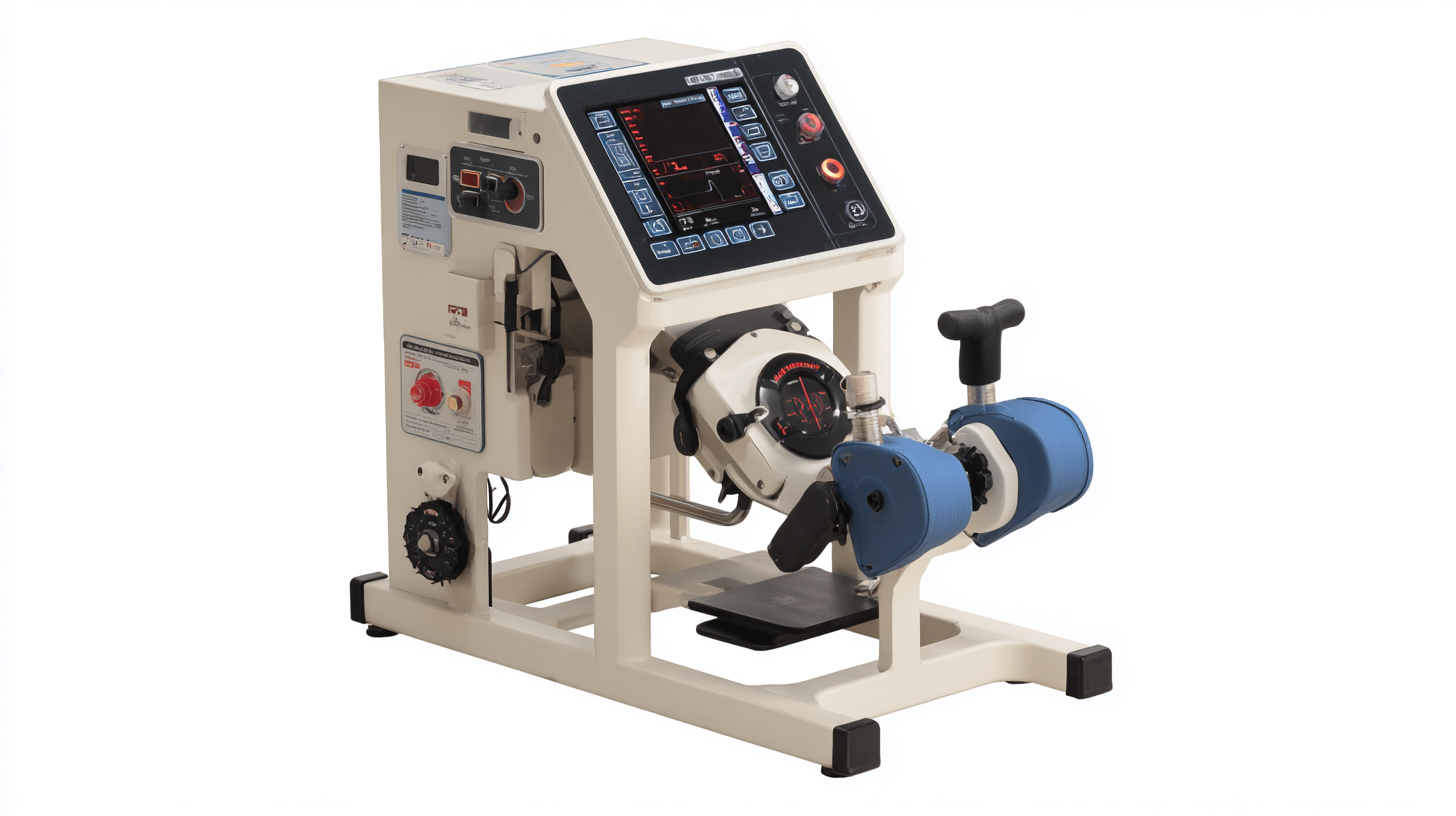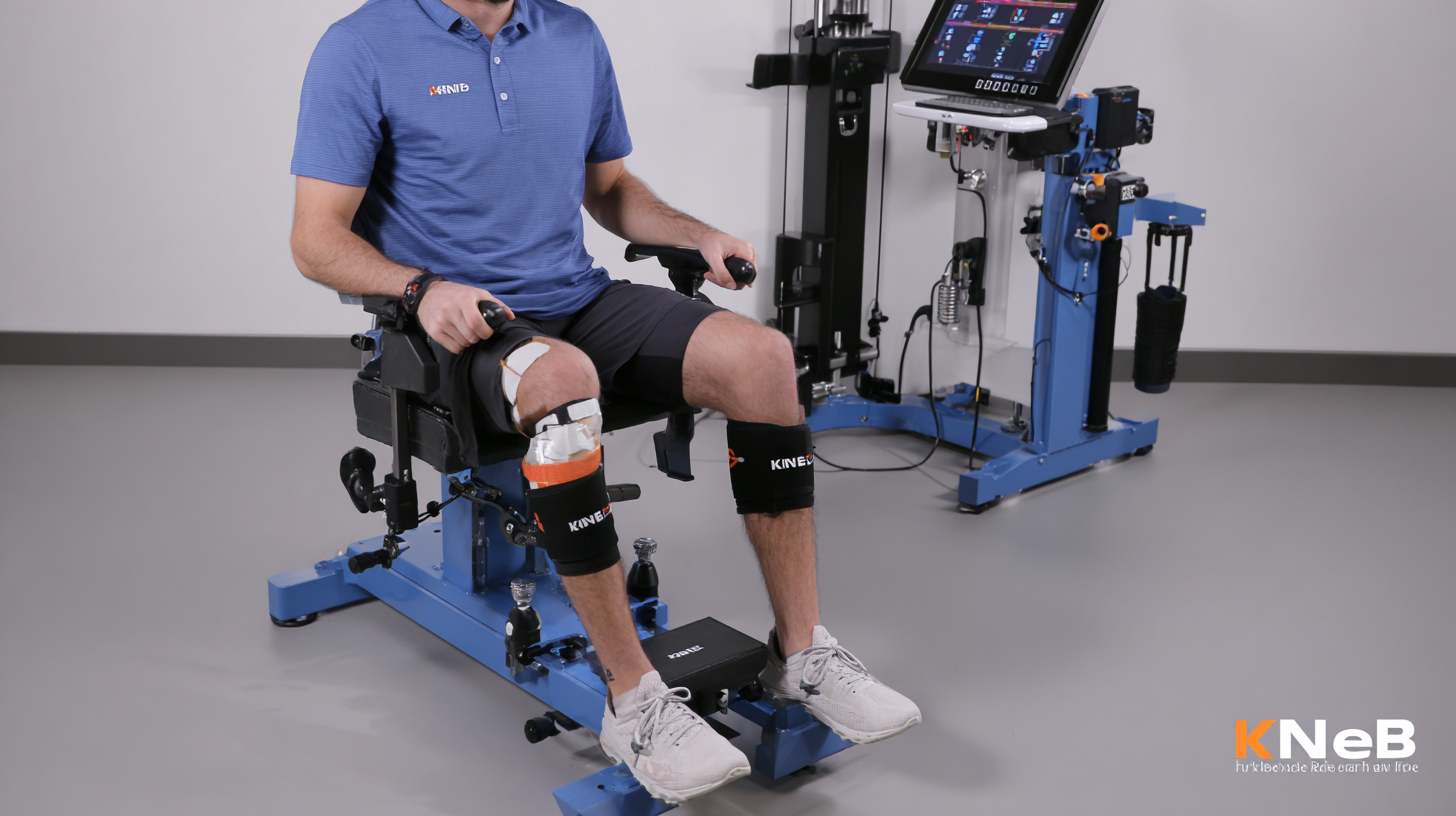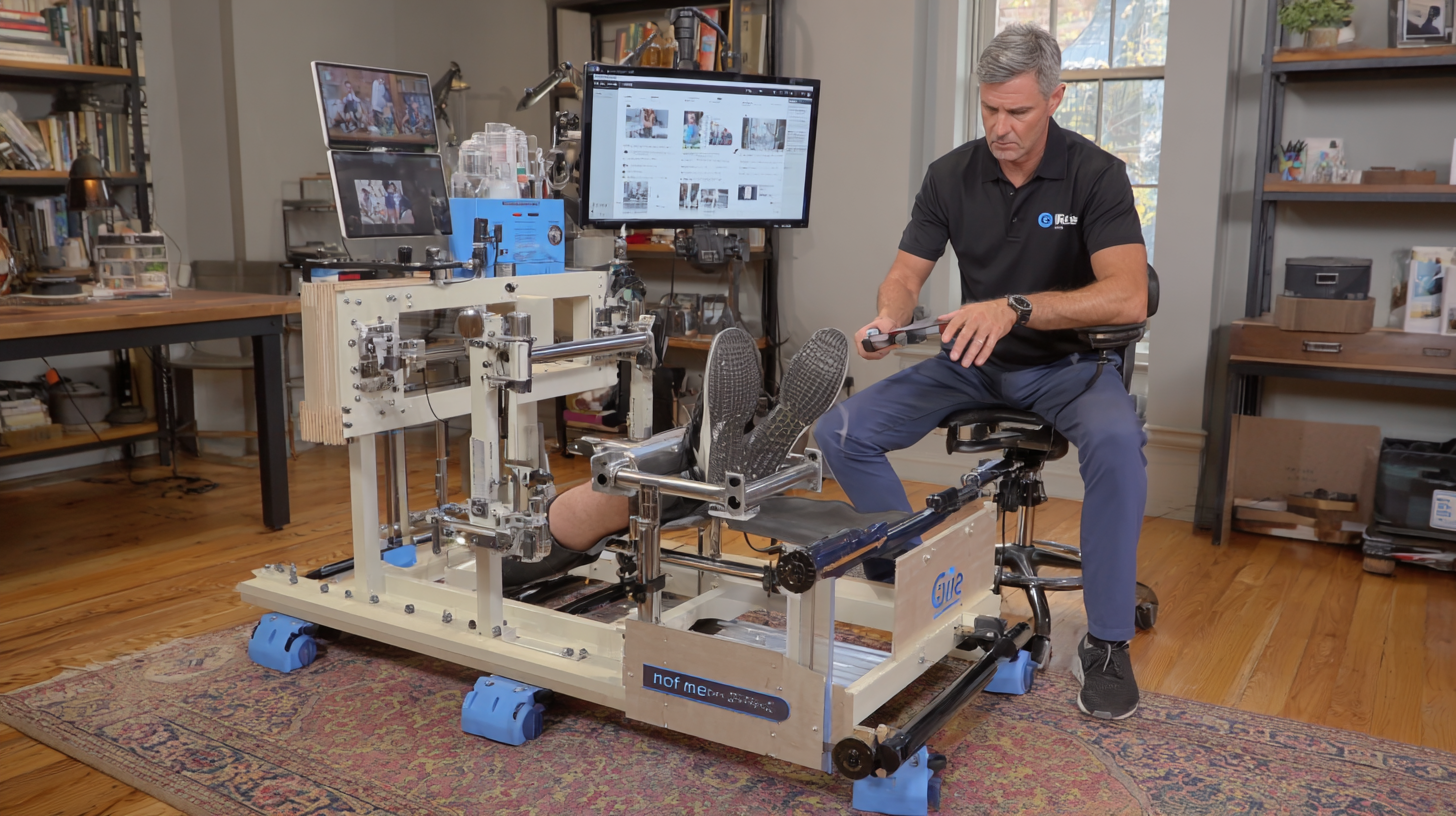The Ultimate Guide to Choosing the Best Knee Rehab Machine: Insights and Trends for Global Buyers
When navigating the complex landscape of rehabilitation equipment, the importance of selecting the right Knee Rehab Machine cannot be overstated. As more individuals seek effective solutions to recover from knee injuries and surgeries, the demand for innovative and efficient rehab machines is on the rise. This guide aims to equip global buyers with essential insights and trends in the knee rehabilitation sector, focusing on key factors to consider during the purchasing process. From understanding the technology behind various machines to exploring user-friendly features that enhance recovery, this checklist will serve as a vital resource for anyone looking to invest in a Knee Rehab Machine. By following these comprehensive guidelines, you can ensure that your choice not only meets your therapeutic needs but also aligns with the latest advancements in rehabilitation technology.

The Growing Demand for Knee Rehab Machines in Global Markets by 2025
The demand for knee rehabilitation machines is set to soar in global markets, with projections estimating a compound annual growth rate (CAGR) of approximately 7.5% from 2022 to 2025. This growth is driven by an increasing aging population and a rising prevalence of knee-related injuries and conditions, such as osteoarthritis. According to a recent report by Research and Markets, the global knee rehab equipment market is expected to reach nearly $2 billion by 2025, highlighting a significant investment opportunity for manufacturers and healthcare providers alike.
Furthermore, factors like the integration of advanced technologies in rehabilitation equipment, such as digital monitoring and personalized settings, have made knee rehab machines more appealing to both patients and practitioners. A study published in the Journal of Rehabilitation Research indicates that patients using technologically enhanced rehab devices experience 30% improved outcomes compared to traditional methods. As healthcare systems around the world prioritize efficient, outcome-based treatments, the shift toward innovative knee rehab solutions will likely redefine rehabilitation processes and enhance patient care globally.

Key Features to Look for in Knee Rehab Machines: Performance Metrics and User Experience
When selecting the best knee rehab machine, there are several key features to consider, particularly performance metrics and user experience. According to a 2021 report by the International Journal of Rehabilitation Research, machines that offer adjustable resistance settings and programmable exercise regimens are essential for tailoring rehabilitation to individual patient needs. Such customization can enhance recovery outcomes by allowing users to gradually increase their workload, which has been shown to improve strength and functionality by up to 30% in patients post-surgery.
Additionally, user experience plays a pivotal role in the effectiveness of knee rehab machines. A survey by the American Physical Therapy Association found that machines with ergonomic designs, user-friendly interfaces, and real-time performance tracking significantly improve adherence to rehabilitation programs. Features such as touch screens, guided tutorials, and instant feedback can make the rehabilitation process more engaging and less intimidating for users, thereby increasing their motivation and commitment. As trends shift toward incorporating smart technology in rehabilitation equipment, devices that seamlessly integrate data tracking and smartphone connectivity are becoming increasingly favored by both clinicians and patients alike.
Emerging Technologies Revolutionizing Knee Rehabilitation Equipment in 2025
As we approach 2025, the landscape of knee rehabilitation is set to be transformed by emerging technologies that promise to enhance recovery outcomes significantly. According to a report by MarketsandMarkets, the global knee rehabilitation equipment market is projected to reach USD 367 million by 2025, growing at a CAGR of 7.3% from 2020. This growth is fueled by innovations in smart technologies, such as artificial intelligence and telehealth solutions, which are making rehab routines more personalized and accessible.
One of the most exciting advancements in knee rehab machines is the integration of AI-driven analytics that offer real-time feedback on patient movements and recovery progress. Devices equipped with motion sensors and data analytics capabilities allow therapists to tailor rehabilitation programs to individual needs, improving adherence and efficiency. Additionally, we are witnessing the rise of virtual reality (VR) systems that immerse patients in engaging rehabilitation exercises, making the process less monotonous and more effective. A study published in the Journal of NeuroEngineering and Rehabilitation highlighted that patients using VR for knee rehab showed a 30% improvement in overall recovery times compared to traditional methods, underscoring the technological shift that is reshaping the future of this vital medical field.

Market Trends Affecting the Design and Functionality of Knee Rehab Machines
The global market for knee rehab machines is evolving rapidly, driven by advancements in technology and an increasing focus on patient-centered care. One prominent trend is the integration of smart technology into knee rehab machines. These devices now come equipped with features such as real-time monitoring, app connectivity, and personalized rehabilitation programs. This shift not only enhances user engagement but also allows healthcare providers to track progress more effectively, tailoring treatments to individual needs.
Moreover, there is a growing emphasis on ergonomics and user-friendly design in knee rehab machines. As the demand for at-home rehabilitation solutions rises, manufacturers are designing machines that are not only effective but also easy to use, accommodating various user demographics, from young athletes to elderly patients. The focus on compact designs also reflects the trend of integrating rehabilitation into everyday environments, making it easier for users to incorporate therapy into their routines without the challenge of bulky equipment. These market trends are shaping the future of knee rehabilitation, ensuring that patients receive efficient and accessible care.
Insights from Industry Experts: Predictions for Knee Rehabilitation Technology Advancements
As the demand for effective knee rehabilitation solutions continues to grow, industry experts are increasingly predicting noteworthy advancements in rehabilitation technology. One of the most anticipated innovations is the integration of artificial intelligence and machine learning algorithms in knee rehab machines. This technology promises to personalize treatment plans based on real-time data analysis, allowing for a more tailored approach to recovery that can adapt to an individual’s progress and specific needs.
In addition to AI-driven enhancements, there is a growing emphasis on user-friendly designs that facilitate accessibility for all patients, regardless of their fitness level or age. Future knee rehab machines are expected to feature intuitive interfaces and interactive elements that engage users and motivate them throughout their rehabilitation journey.
These advancements not only aim to improve the efficiency of recovery but also to enhance the overall user experience, ensuring that rehabilitation becomes a more encouraging and less daunting process. As these technological trends develop, global buyers can look forward to a new era of knee rehabilitation that prioritizes both efficacy and patient engagement.
